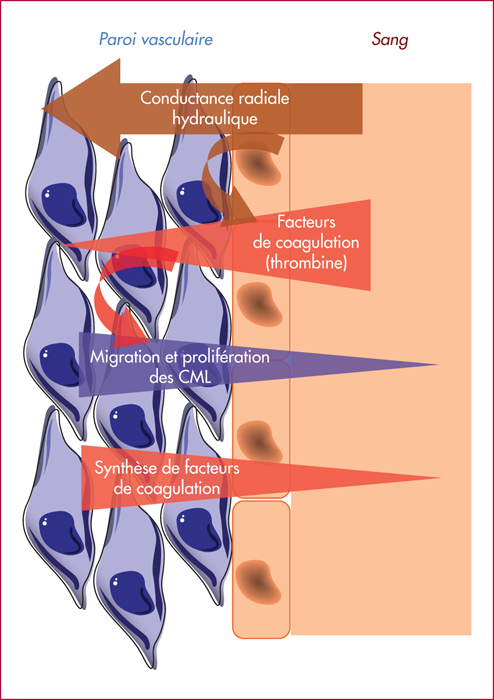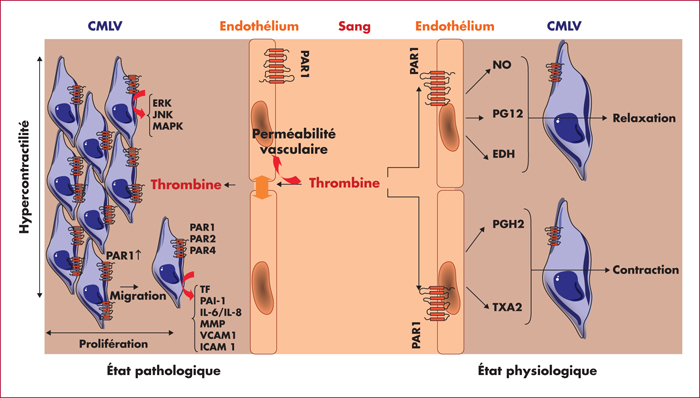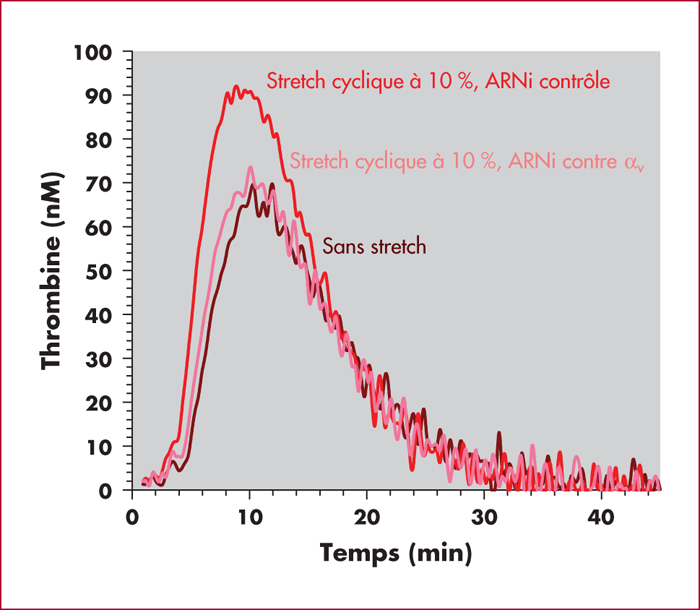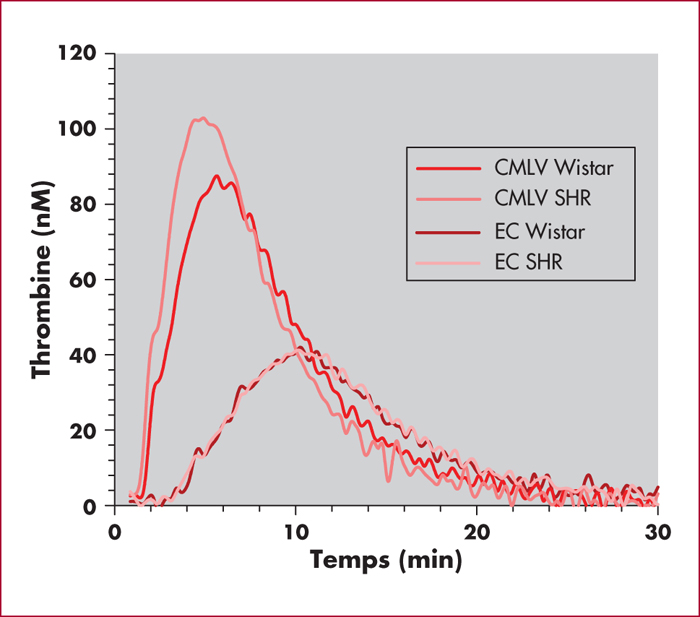Hématologie
MENUPro- and anti-coagulants properties of vascular smooth muscles cells Volume 22, issue 6, Novembre-Décembre 2016
- Key words: vascular smooth muscle cells, coagulation, pulsatility, atherosclerosis, hypertension
- DOI : 10.1684/hma.2016.1191
- Page(s) : 421-8
- Published in: 2016
Thrombin generation is determined in vivo by the presence of coagulation factors and a cellular procoagulant phospholipid surface. Vascular smooth muscle cells (VSMCs) can support thrombin generation and could thus possess a potential role in hemostasis. Although the endothelial cells (ECs) are known to be directly implicated in blood hemostasis, VSMCs are in contact with blood in cases of vascular injury. That is why, even if the main role of VSMCs is to regulate vascular tone and extracellular matrix composition, we provide evidence that these cells could be an important and underestimated modulator of the hemostasis processes. This question is even more interesting when we take into account that many clotting factors are synthesized by VSMCs as well by ECs, some of which are procoagulant (tissue factor, factor II and V), and others anticoagulant (tissue factor pathway inhibitor, protein C, thrombomodulin, endothelial protein C receptor). However, since the discovery of thrombin cellular receptors (PAR) on VSMCs, the potential actions of coagulation factors on VSMC proliferation have been considered but not the potential implication of VSMCs themselves in thrombin generation. In this review we will present studies that search out links between VSMCs and coagulation with emphasis on studies looking at the potential impact of VSMCs on coagulation in normal and in pathological conditions.





